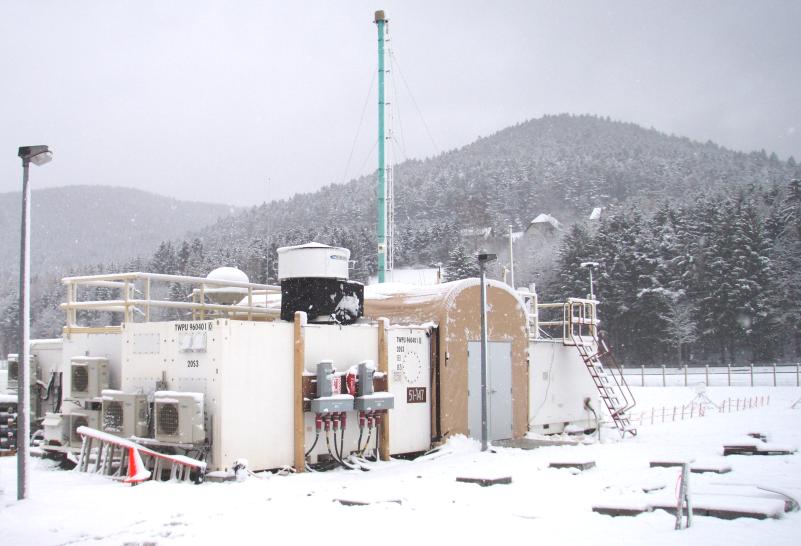New ARM Field Campaign to Study Cold-Air Outbreaks Around Norwegian Sea
Published: 19 January 2018

Each year, the ARM Climate Research Facility receives proposals to use key components of the facility for field campaigns that address the ARM mission of improving the understanding and representation of clouds and aerosols in earth system models, as well as their interactions and coupling with Earth’s surface.
From the 2017 call for proposals, the U.S. Department of Energy has selected a new field campaign—the Cold-Air Outbreaks in the Marine Boundary Layer Experiment (COMBLE)—to take place from January to May 2020 around the Norwegian Sea. COMBLE will aim to shed light on the dynamics and microphysical properties of clouds and precipitation in the high-latitude marine boundary layer during cold-air outbreaks.
Boreal regions (just south of the Arctic) have experienced warming faster than the rest of the planet, and the ice cover in the Arctic has declined faster than predicted by most earth system models. Clouds within the marine boundary layer, which are often convective, have a stronger effect on the Earth’s energy balance than any other cloud type. When cold air from the Arctic flows over the warmer open ocean, boundary layer convection commonly occurs. However, little is known about the cloud properties associated with cold-air outbreaks or how they vary with surface, environmental, and aerosol conditions. The role of cold-air outbreaks in the atmospheric and ocean circulation is also uncertain.
To help fill in these observational gaps, COMBLE will deploy the first ARM Mobile Facility and a smaller ARM mobile station in the far North Atlantic. Bart Geerts of the University of Wyoming is the principal investigator for the field campaign, which will involve researchers from more than 15 institutions in the United States and Europe.
COMBLE will collaborate with several campaigns, notably the Multidisciplinary Drifting Observatory for the Study of Arctic Climate (MOSAIC) and ArctiC Amplification: Climate Relevant Atmospheric and SurfaCe Processes and Feedback Mechanisms, otherwise known as (AC)3. From September 2019 to October 2020, the second ARM Mobile Facility will be deployed as part of the MOSAIC field campaign, which will characterize source air masses of cold-air outbreaks over arctic ice. Meanwhile, (AC)3—a project studying the increased near-surface temperatures in the Arctic in recent decades—will operate several aircraft between northern Scandinavia and the MOSAIC deployment in March and April 2020 to document how the air masses evolve.
The ARM Climate Research Facility is a DOE Office of Science user facility. The ARM Facility is operated by nine DOE national laboratories.
Keep up with the Atmospheric Observer
Updates on ARM news, events, and opportunities delivered to your inbox
ARM User Profile
ARM welcomes users from all institutions and nations. A free ARM user account is needed to access ARM data.


















